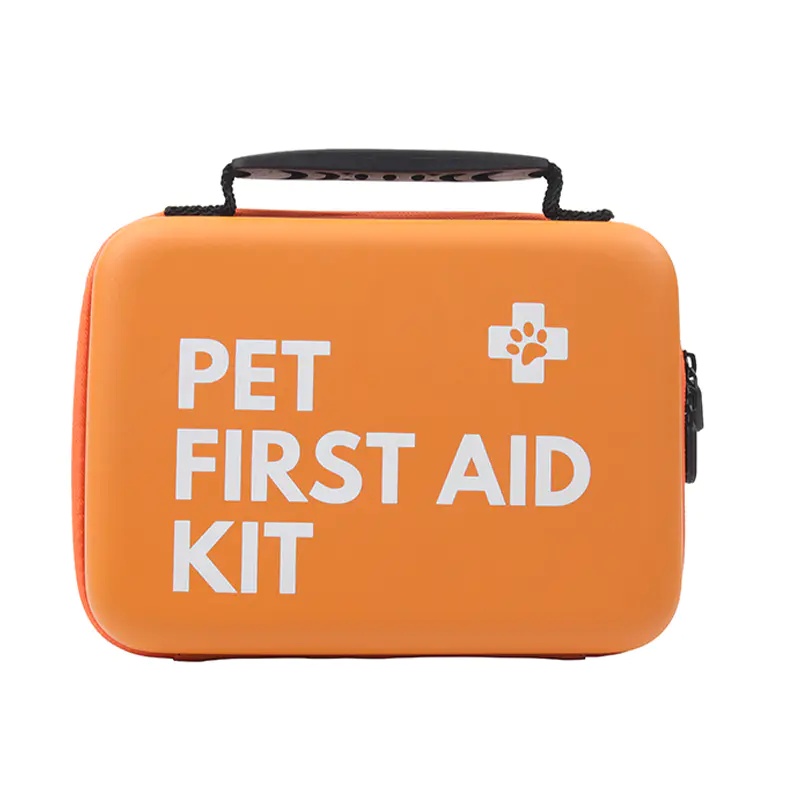For any responsible pet owner, keeping a Pet First Aid Kit at hand is not just a precaution—it is an essential part of caring for an animal's well-being. Accidents and emergencies can happen at home, during travel, or while playing outdoors, and having the right kit ensures that quick action can be taken. But choosing the most suitable kit is not always straightforward. The ideal choice often depends on the type of pet, the environment, the materials used in the kit, and its overall size and design. Understanding these factors can help pet owners make decisions that provide both safety and peace of mind.

Different pets require different considerations when it comes to first aid. For example, dog owners often need kits that include larger bandages, antiseptic sprays, and sturdy tools suitable for more active animals that may experience cuts or sprains during outdoor activities. Cat owners, on the other hand, benefit from smaller supplies, such as fine-tipped tweezers for removing splinters or tick tools that are safe for delicate skin. Owners of small pets like rabbits, hamsters, or birds may look for specialized items such as smaller gauze pads or lightweight wraps that do not overwhelm the animal. Choosing a kit tailored to the type of pet ensures that the items inside are actually useful, rather than generic tools designed for human use.
The materials used to construct the case of a Pet First Aid Kit also play an important role in determining its suitability for different situations. A soft fabric kit may be lightweight and flexible, making it easy to carry in a backpack during walks or hikes. These are often preferred by pet owners who want portability without extra weight. On the other hand, hard shell kits provide strong protection, ensuring that supplies remain sterile even if the kit is dropped or exposed to rough handling. Waterproof plastic cases are ideal for outdoor adventures, camping trips, or families living in humid climates, since they keep contents dry and safe from contamination. Selecting the right material means ensuring the kit can withstand the environments where it is most likely to be used.
Size and structure are also critical factors to think about. A small travel-sized kit is perfect for quick outings, car rides, or visits to the park. These compact designs usually contain just the essentials—bandages, antiseptic wipes, and a pair of scissors—making them easy to pack in a bag or keep in the glove compartment. Medium-sized kits are more suitable for households with one or two pets, offering a balance between comprehensiveness and convenience. Large kits, with multiple compartments and a wider selection of tools, are ideal for families with multiple animals or for professional use in pet grooming salons and boarding facilities. Structure matters just as much as size: kits with well-organized compartments and labeled sections make it easier to act quickly in emergencies, especially for owners who may feel stressed in urgent situations.
To make the decision clearer, here is a simplified way of matching different types of kits to common needs:
| Pet or Situation | Best Kit Type | Why It Works |
|---|---|---|
| Active dogs | Sturdy case with larger bandages, sprays | Designed for outdoor injuries and rough play |
| Indoor cats | Compact kit with fine tools, small wraps | Suits delicate needs without extra bulk |
| Small pets (rabbits, birds) | Lightweight kit with gentle supplies | Prevents overwhelming smaller animals |
| Travel or hiking | Soft fabric or waterproof portable kit | Easy to carry and protects against weather |
| Multi-pet households | Large structured kit with compartments | Covers a wider range of emergencies |
Choosing the right Pet First Aid Kit also depends on lifestyle. For owners who enjoy outdoor adventures with their pets, portability and water resistance become more important than the number of supplies. For those who spend more time indoors, organization and safety of the contents may matter more than durability against weather. By thinking through these everyday scenarios, pet owners can better match the features of a kit with the real situations they may face.
Beyond just features, however, long-term reliability should be a priority. Supplies should be high quality and specifically safe for animals. Antiseptics must be formulated to avoid irritating sensitive skin, and bandages should be designed to avoid sticking to fur. Tools should be durable enough to use repeatedly, and the overall design should encourage owners to keep the kit accessible, rather than hidden away in a drawer. A Pet First Aid Kit should be a practical companion, not just an item purchased and forgotten.
For pet owners searching for a trusted source, Yonoel has established itself as a factory dedicated to creating high-quality Pet First Aid Kits that address these real-world concerns. Their kits are designed with different pets and scenarios in mind, offering options that range from compact travel-friendly sets to larger, comprehensive solutions for multi-pet households. Yonoel emphasizes durability by using strong, water-resistant materials, and ensures that the internal supplies are tailored to animals' needs, not just adapted from human products.
What makes Yonoel's approach stand out is the careful balance between practicality and safety. By combining thoughtful compartment design with pet-safe materials, the company delivers products that truly serve the daily lives of pet owners. Whether for a dog that loves the outdoors, a cat that stays indoors, or small pets requiring delicate care, Yonoel offers a Pet First Aid Kit that meets the need with reliability and reassurance.